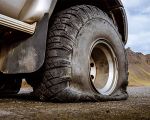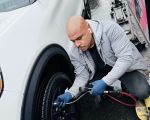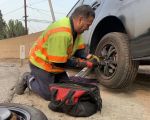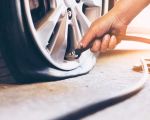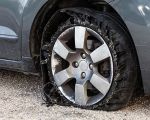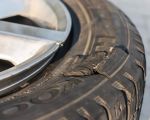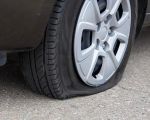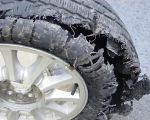How to Prevent Getting a Flat Tire: Tips for Vehicle Owners
As a driver, there’s nothing more frustrating than realizing you’ve got a flat tire, especially when you’re on the road. I’ve been there myself, stuck in the middle of nowhere, trying to change a tire in the sweltering heat or during a downpour. But over time, I’ve learned that avoiding this situation is more about proactive care than reactive fixes. Let me take you through the steps I’ve learned to prevent getting a flat tire, so you don’t have to experience the inconvenience and stress of dealing with one when it happens.
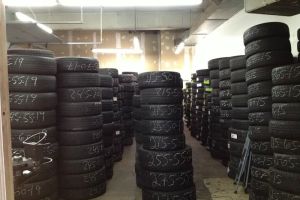
MR. TIRE INC.
2078 New York Ave, Huntington Station, NY 11746, USA
1. Regularly Check Tire Pressure
The first and most important tip I can offer is to regularly check your tire pressure. Over or under-inflated tires are more susceptible to damage, and it’s easy to overlook how important tire pressure really is. I used to think that as long as my tires looked fine, I was good to go. But after a few close calls, I learned that the right tire pressure is critical for tire health.
Tires that are under-inflated have more surface area in contact with the road, which generates more heat, causing them to wear out faster. Over-inflated tires, on the other hand, can lead to blowouts because they don’t provide as much traction, and their surface area is smaller, making them more vulnerable to punctures.
My advice is to check the tire pressure at least once a month and before long trips. You can do this easily at a gas station or purchase a tire pressure gauge for quick checks at home. Most vehicles have the recommended tire pressure listed on the driver’s side door or in the owner’s manual. Keep your tires inflated to the manufacturer’s recommendations to avoid unnecessary wear and potential blowouts.

MR. TIRE INC.
2078 New York Ave, Huntington Station, NY 11746, USA
2. Inspect Your Tires for Visible Damage
Another way to prevent getting a flat tire is to regularly inspect your tires for visible damage. I can’t tell you how many times I’ve found myself with a flat tire because I neglected to check for cuts, cracks, or other signs of wear. Tires go through a lot of stress, and over time, they can develop weak spots that might not be immediately noticeable but can lead to issues later.
Every few weeks, I recommend inspecting each tire closely. Look for:
- Cracks or cuts: These can be caused by road debris, potholes, or even prolonged exposure to the sun.
- Bulges or blisters: These could indicate internal damage or a weak spot in the tire.
- Uneven wear: Check if the tread is wearing down unevenly. This could mean an alignment or suspension issue.
Minor issues can sometimes be repaired, but major damage often requires replacing the tire. Catching these problems early will help you avoid a flat tire on the road, which can be a major hassle, especially if you’re far from home.
3. Avoid Potholes and Debris
If you’ve ever had a flat tire caused by a pothole, you know how frustrating it can be. I used to ignore the need to steer around debris or potholes, thinking my car could handle it, but I learned the hard way that this is one of the easiest ways to get a flat tire. Potholes can create instant damage to your tires, causing a puncture or impacting the alignment, which makes the tires wear out unevenly.
The next time you’re driving, keep an eye out for potholes and debris. When you can, try to steer clear of them. If you can’t avoid a pothole, it’s best to slow down before hitting it to reduce the force on the tire. A simple act like slowing down can help save you from a lot of future hassle.
4. Rotate Your Tires Regularly
Tires wear out unevenly, and one of the easiest ways to prolong their life is to rotate them regularly. Most mechanics recommend rotating tires every 6,000 to 8,000 miles. When you rotate your tires, you ensure that the tread wears evenly, which helps prevent flat tires caused by overly worn-down sections.
I’ll admit, I didn’t rotate my tires as often as I should have in the past. But after learning how uneven wear affects tire life, I’ve made it a point to get my tires rotated every time I go for an oil change. It’s a simple service that makes a huge difference in the longevity of your tires and reduces the risk of getting a flat.
5. Replace Worn-out Tires
It’s easy to put off replacing worn-out tires, especially if the tread still looks decent. But once the tread wears down, your tires are much more vulnerable to punctures. The minimum legal tread depth in the U.S. is 2/32 inches, but it’s a good idea to replace your tires when the tread reaches 4/32 inches for better performance and safety, especially in wet conditions.
I once ignored the signs of worn-out tires and paid the price with a flat in the middle of a rainstorm. Tires that are too worn down lose their ability to grip the road properly, making them more prone to punctures and blowouts. If you notice that your tires are getting close to the wear limit, it’s time to replace them. It may seem like an unnecessary expense at the moment, but in the long run, it will save you time, money, and stress.
6. Be Mindful of Weight and Load
Did you know that overloading your car can increase the risk of getting a flat tire? I didn’t realize this until I had to replace a tire that was damaged due to carrying too much weight. When you overload your car, the tires are put under extra stress, which can lead to overheating and premature wear. If you’re planning a road trip or transporting heavy loads, make sure you’re not exceeding your vehicle’s weight limit.
Always check the maximum load capacity in your vehicle’s manual and never exceed it. By managing the load properly, you reduce the chances of damaging your tires and avoid the possibility of a flat from excessive pressure.
7. Invest in Roadside Assistance
While I’ve shared a lot of tips to prevent a flat tire, accidents do happen. That’s why investing in roadside assistance is a great idea for peace of mind. I’ve used roadside assistance several times over the years, and having that service available during an emergency has been invaluable. From helping me replace a tire in a parking lot to towing my car to a nearby mechanic when I had a blowout, it’s comforting to know that help is just a phone call away.
If you’re concerned about the potential of getting a flat tire, consider signing up for roadside assistance. It can save you a lot of stress and time in an emergency. Many roadside assistance programs also offer additional services like jump-starts, fuel delivery, and lockout help, which can be a lifesaver in various situations.
Conclusion
Preventing a flat tire is all about being proactive and taking proper care of your vehicle. Regular maintenance, proper tire inflation, and avoiding hazards like potholes will go a long way in keeping your tires in good condition. While it’s impossible to prevent every flat tire, following these tips will significantly reduce the likelihood of one occurring. And if you do end up with a flat, having roadside assistance can make a stressful situation much easier to handle.
SEO Title: How to Prevent Getting a Flat Tire: Essential Tips for Drivers SEO Keywords: prevent flat tire, tire maintenance, tire pressure, car tires, roadside assistance SEO Description: Learn the essential steps to prevent flat tires with expert advice on tire care, inflation, and maintenance. Keep your tires in top shape and avoid roadside emergencies.












